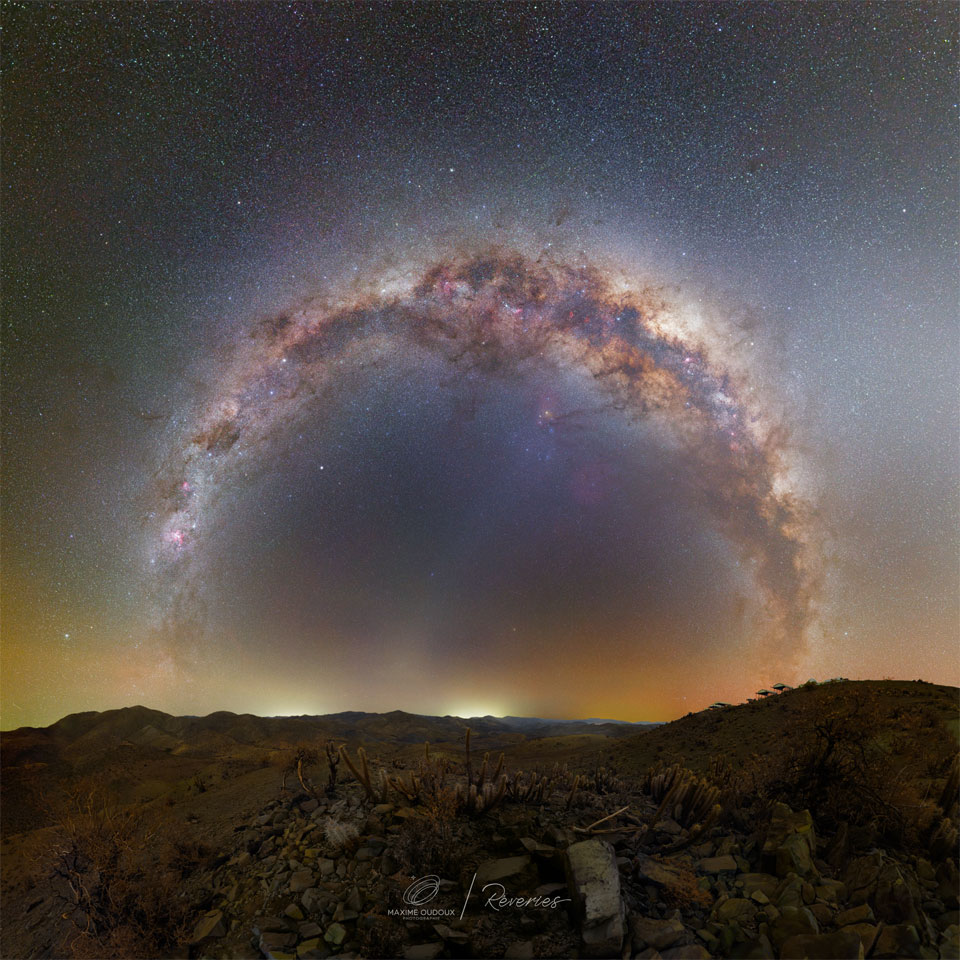2022年8月17日
Stargate Milky Way
Image Credit & Copyright: Maxime Oudoux
Explanation: There is a huge gate of stars in the sky, and you pass through it twice a day. The stargate is actually our Milky Way Galaxy, and it is the spin of the Earth that appears to propel you through it. More typically, the central band of our Milky Way appears as a faint band stretching across the sky, only visible in away from bright city lights. In a long-exposure wide-angle image from a dark location like this, though, the Milky Way’s central plane is easily visible. The featured picture is a digital composite involving multiple exposures taken on the same night and with the same camera, but employing a stereographic projection that causes the Milky Way to appear as a giant circular portal. Inside the stargate-like arc of our Galaxy is a faint stripe called zodiacal light — sunlight reflected by dust in our Solar System. In the foreground are cacti and dry rocks found in the rough terrain of the high desert of Chile, not far from the El Sauce Observatory and the developing Vera Rubin Observatory, the latter expected to begin routine operations in 2024.
Tomorrow’s picture: open space
形似恒星之门的银河
影像提供与版权: Maxime Oudoux
说明: 天上有一扇巨大的恒星之门,你每天都要通过二次。这扇恒星之门其实是我们的银河系,而地球的自转看似推着你穿过它。通常我们银河系的中央盘面为一道横跨天空的暗淡光带,只有在远离明亮城市灯火的地方才得见。然而,在像这种摄于幽暗地点的长曝光广角影像里,银河系的中央盘面轻易可见。这幅主题影像,数位组合自同一部相机在同个晚上拍摄的多张照片,然后运用立体投影,让银河看起来像是一个巨大的圆拱门。在拱门状的银河之内,可见到太阳系内的尘埃反射阳光所形成、称为黄道光的暗淡光带。影像的前景为智利高原沙漠崎岖地表上的仙人掌和岩石,它们附近有埃尔绍塞天文台及建造中的薇拉鲁宾天文台,后者预计在2024年上线进行常态运转。
明日的图片: open space







